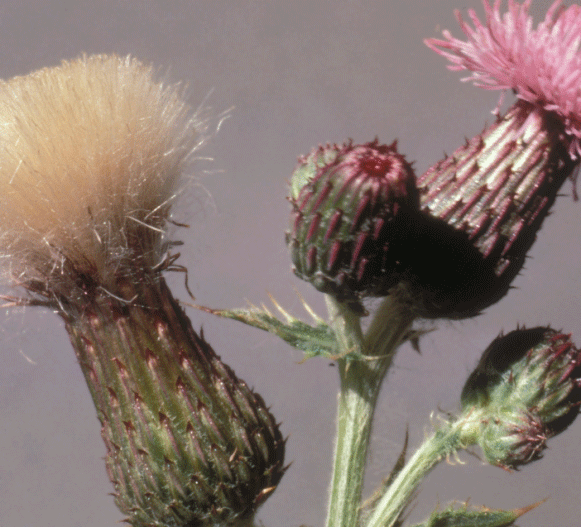Washington's Noxious Weed Laws
Why We Have Laws to Control Noxious Weeds
Weed laws establish all property owners’ responsibility for helping to prevent and control the spread of Noxious Weeds. Since plants grow without regard to property lines or political jurisdictions, everyone’s cooperation is needed – city gardeners, farmers, government land agencies, foresters, and ranchers all have a role to play.
Washington’s weed laws spell out these responsibilities and create the government infrastructure needed to educate citizens and ensure that the laws are respected.
Washington’s weed laws also direct the state Noxious Weed Control Board to create and maintain the state’s official list of noxious weeds that landowners may be required to control.
Washington is a National Leader in Establishing Weed Laws
Washington’s first weed law was passed in 1881 to fight the spread of Canada thistle, a weed that was accidentally brought by early settlers.
In the late 1960s, the state legislature established the state’s Noxious Weed Control Board, and authorized counties to establish County Weed Boards. Thirty-eight of Washington’s 39 counties have such boards. There are also a handful of Weed Districts that are contiguous with Irrigation Districts.
The Laws
RCW 17.10
RCW 17.10 (Revised Code of Washington) is the state’s basic weed law.
The Washington Administrative Code (WAC) contains the rules and regulations needed to carry out state law.
WAC Chapter 16-750
WAC Chapter 16-750 includes the state Noxious Weed List, definitions and descriptions of region boundaries for Class B weeds, and the schedule of monetary penalties.
WAC Chapter 16-752
WAC Chapter 16-752 describes the quarantine list maintained by the state Department of Agriculture. (The state law that calls for the creation and maintenance of the quarantine list is RCW 17.24.)
RCW 17.04, RCW 17.06
Weed Districts and Intercounty Weed Districts laws. There are nine Weed Districts in Washington: five in Kittitas County, two in Grant County, one in Adams County and one in Benton County. There are two Intercounty Weed Districts in Washington, both of which encompass parts of Grant and Adams counties.
The State’s Noxious Weed List is Organized into Three Classes of Weeds: Class A, B, and C.
Class A Weeds
- Class A weeds are mostly newcomers to Washington, and are generally rare.
- The goal is to completely eradicate them before they gain a foothold.
- Landowners are required to completely eradicate Class A weeds. (Eradicating weeds means getting rid of the plants altogether, including plant roots.)
Class B Weeds
- Class B weeds are those that are widespread in some parts of the state, but limited or absent in other parts of the state.
- The goal with Class B weeds is to prevent them from spreading into new areas, and to contain or reduce their population in already infested areas.
- The State Weed Board designates Class B noxious weeds for control in those parts of the state where they are limited or absent and threaten to invade. Click here to view how Class B noxious weeds have been designated for control in Washington. Designations are based on this region map. Additionally, a County Weed Board may select a Class B non-designate for control if it is considered a local priority.
- Landowners may be required to control Class B noxious weeds, depending on how widespread the species is and/or whether the species is a local priority. Check with your County Noxious Weed Control Board for more info on which Class B species you must control.
Class C Weeds
- Class C weeds are often widespread, or are of special interest to the agricultural industry.
- The State Weed Board does not require control of Class C noxious weeds.
- The State and many County Weed Boards provide information on identification and best management practices for these species.
- A County Weed Board may require landowners to control a Class C weed if it poses a threat to agriculture or natural resources. Check with your County Noxious Weed Control Board for more info on which Class C species you must control.
Quarantine Weed List
The Washington State Department of Agriculture (WSDA) maintains a plant quarantine list, called 'Plants And Seeds Whose Sales are Prohibited in Washington State'. This quarantine list consists of both terrestrial (land) and aquatic (water) plants known to be invasive and damaging. The quarantine list includes those plants whose sale or distribution is prohibited in Washington State.
All Class A weeds are on the quarantine list. Some plants are placed on the list to prevent them from ever being imported to our state.
It is illegal to transport, buy, sell, or trade any quarantined species. It is also illegal to distribute seed packets, flower seed blends, or 'wildflower mixes' that include these plants. Anyone who violates the quarantine restrictions is subject to a civil penalty of up to $5,000 per violation.
You can view a gallery of quarantined weeds with information on each weed on our quarantined noxious weed list page. For more information about the WSDA Quarantine Plant List, please visit their website.
What it Means to 'Control' Weeds
Controlling weeds means not letting weeds reproduce- usually, that simply means not letting them go to seed. Legally, control means to prevent the dispersal of all propagating parts capable of forming a new plant, including seeds.
Penalties for Landowners Who Fail to Control Noxious Weeds
If the landowner does not control noxious weeds after receiving several notifications, the County Weed Board or Weed District may come and control the weeds and bill the landowner or may issue a civil infraction.



